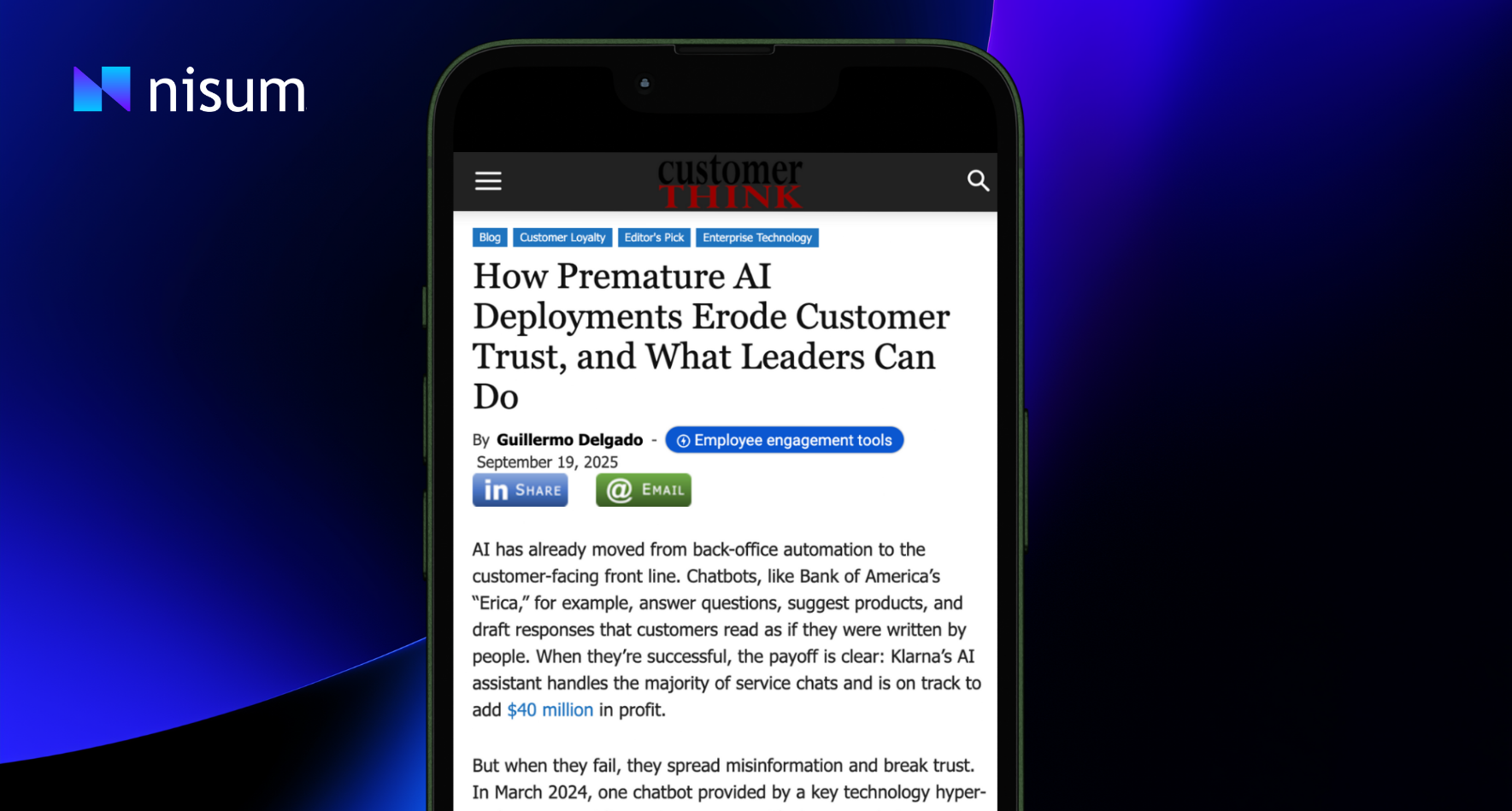Retailers are rethinking their AI investments after early projects failed to deliver ROI. Here’s a practical five-step guide to realigning technology with measurable business outcomes.

Your company spent heavily on an AI agentic solution, and months later, there is still no ROI. You are not alone. Many retailers find themselves in the same position: impressive technology, low impact, and growing doubts about what went wrong.
In his recent Total Retail article, Guillermo Delgado Aparicio, our Global AI Leader at Nisum, reminds retailers that AI success starts with readiness, with ensuring the foundations, data, and strategy are aligned before launching agentic solutions.
But what if that step was missed? What if the investment already happened, and the results are disappointing?
This is where the recovery begins.
Here’s a five-step framework to turn a costly AI misstep into a smarter, more resilient strategy.
Step 1: Revisit the "Why" Behind the Investment
Start by mapping your original motivation. What problem was AI supposed to solve: efficiency, personalization, cost reduction, or innovation?
If the business challenge was not clearly defined, neither was the path to value.
Ask your team:
- What specific outcomes were expected?
- Were those goals measurable and tied to business KPIs?
Clarifying the “why” is the first step to rebuilding purpose and ROI.
Step 2: Audit the Data Foundation
Even the best AI fails without clean, structured, and accessible data.
Reassess your customer, sales, and inventory datasets for accuracy and completeness. Identify missing elements, inconsistent formats, or systems that do not communicate.
As Guillermo explains, AI is only as strong as its foundation. Without solid data pipelines, agentic solutions become guesswork.
Step 3: Simplify the Scope and Start Small
Many failed AI programs tried to do too much, too soon. Instead of rebuilding a massive system, isolate one high-impact use case where success is measurable, such as demand forecasting, price optimization, or personalized offers.
Run a small-scale pilot, validate results, then scale up.
In AI, small wins are the foundation of sustainable success.
Step 4: Realign AI With Operational Goals
Technology that does not serve operations is just noise.
Reframe your AI project around clear, practical questions:
- Does this tool make our team more efficient?
- Does it solve a real business bottleneck?
- Can we measure the improvement?
AI only creates value when it enhances existing workflows or customer journeys, not when it operates in isolation.
Step 5: Reintegrate the Human Element
AI is the amplifier, not the differentiator. It scales your strengths, but it cannot define your strategy.
Rebuild your human-AI balance:
- Let humans drive creativity, empathy, and brand storytelling.
- Let AI handle data-heavy, repetitive decisions.
This balance is where real transformation happens: when humans define “why it matters” and AI ensures “how it scales.”
The Path Forward
Recovering from a failed AI project is not about abandoning technology. It is about reframing it.
The next phase of AI maturity in retail is not about bigger models or flashier tools. It is about smarter decisions, cleaner data, and purpose-driven alignment.
At Nisum, we have seen organizations regain momentum by shifting focus from tool adoption to strategic application, turning past missteps into lasting business advantage.
Because in AI, every failure is just the start of a smarter next step.



